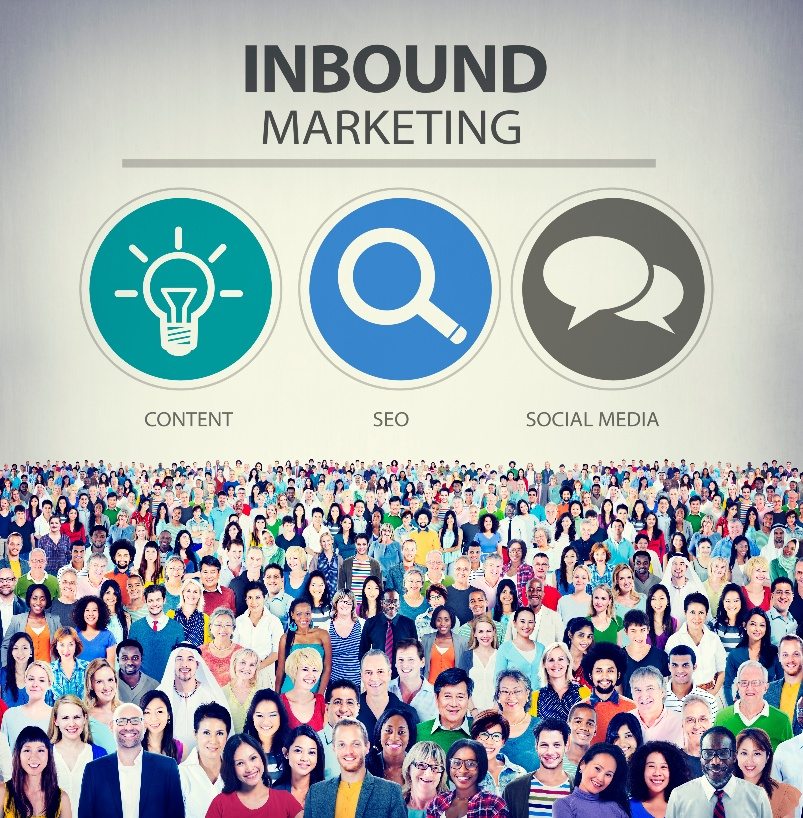How Does Inbound Marketing Work?
Inbound marketing is a popular new buzz phrase in the digital marketing industry, but do you know what it means? Inbound marketing is the process of helping consumers find your company, using helpful and informative content to convert visitors into leads and then into customers, and using positive interactions to turn customers into evangelists for your company. How does inbound marketing work? Allow us to explain.

The Old Ways of Marketing
It was not so long ago that “traditional marketing” involved constant interruptions. Cold calling, blaring advertisements on the television and radio, and door to door encyclopedia salesman would force their way into your life, and it was downright annoying and intrusive.
With ever growing “Do Not Call” lists and door to door sales an almost laughable thing of the past, traditional marketing has been replaced by inbound marketing. Inbound marketing is all about turning traditional marketing on its head. Instead of beating down people’s doors, companies use inbound marketing, and more importantly great content, to turn their websites into giant magnets, attracting consumers from all over the Internet to their site. But how does inbound marketing work?
Using Content To Turn Your Company Into a Magnet
Sadly, there is no shortage of poor writing on the Internet. What distinguishes competitors from one another is great content. You must turn your website into a treasure trove of content that is relevant, helpful, interesting, and informative to your target audience. The easiest way to accomplish this is by creating a blog on your company’s website and posting to it consistently and frequently.
Using a blog to generate content is a great way to rank organically for longtail keywords and to ultimately help consumers find your site. The cardinal rules of blogging for your company are:
- Always be professional and respectful
- Blog consistently and as frequently as possible
- Categorize and tag your blogs
- Incorporate your keyword strategy into your blogs
- Make your copy informative, interesting, and relevant to your buyer personas and their needs, interests, and pain points
Promote & Repurpose Your Content
Once you’ve created a blog, use social media to promote your content. After all, how can you get found if you’re not telling anyone what you’re posting. You cannot simply rely on consumers to regularly check in on your blog and see what’s new. Take initiative with social media.
Another important element of inbound is repurposing content. Once you have created a solid amount of blog content that all pertains to a specific topic, you may want to weave some of that content together into a larger offer, like an ebook. Consumers find ebooks to be of value, so they are more likely to provide you with their email addresses and contact information if you are offering them a valuable ebook with fantastic content in exchange.
Email Marketing
Another important component of inbound marketing is email marketing. You’ve created fantastic content in blogs and in landing pages. You’ve promoted your content on social media. You’ve woven together your fantastic content into great offers and ebooks. Now what?
The answer is email marketing. Use your contact list to promote your blogs, ebooks, and other helpful content offers via email. Include some eye catching calls to action, keep an eye out for great design, link to some landing pages with additional offers, and set those emails free. To be especially effective, ensure that your emails are segmented so that your contacts feel like they are getting a personalized note from you and don’t feel as though they are on the receiving end of some noisy PSA.
The end result of properly-executed inbound campaigns is greater SEO performance, better reach in your target consumer market, and customer delight, which leads to a growth in the number of brand advocates your business has. So the only question that remains is what are you waiting for? If you’re ready to get started, we can help…
